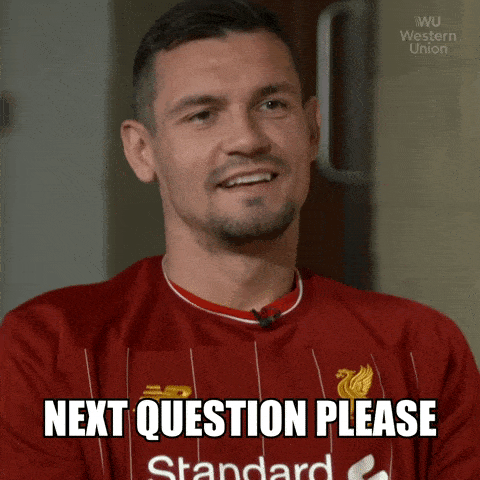- Finterview
- Posts
- United States GDP comes in hot 🔥
United States GDP comes in hot 🔥
How do you work under pressure?
⏱ Reading Time: 3 Minutes 34 Seconds
Happy Friday, future bankers!
Hope that everyone has been doing as well as the US GDP. Reports for U.S. GDP came in far hotter than expected, leading the S&P 500 to hit a new record.
🚀 Let’s get into it.

🔢 Technical Question

Gif by travisband on Giphy
“Two companies are exactly the same, but one has debt and one does not – which one will have the higher WACC?”
1. Start with the general rule:
In most cases, the company without debt would have the higher WACC. This is because the cost of debt is typically lower than the cost of equity generally because interest on debt is tax deductible, as well as it is higher than equity holders on the capital stack.
2. Acknowledge the caveat:
It's important to note that this only applies within reasonable debt levels. If the company has excessive debt or faces financial distress, the perceived risk significantly increases the cost of debt. In such scenarios, the debt-laden company's WACC could actually surpass that of the unleveraged company.
3. Highlight your analytical skills:
To determine which company has the higher WACC in this specific case, we'd need more information about the debt structures, interest rates, financial health, and expected returns on investments of both companies. Analyzing these factors through the lens of capital structure optimization would provide a more precise answer.
Bonus Tips:
Briefly mention the WACC formula and highlight the relevant components (cost of debt, cost of equity, and their respective weights).
If possible, estimate the potential range of the WACC difference based on typical cost of debt and equity for similar companies in the industry.
Be confident and clear in your explanation, and be prepared to answer follow-up questions about specific aspects of WACC or capital structure optimization.
🗣 Behavioral Question

Gif by lilly on Giphy
"Tell me about a time you were under a lot of pressure at work or at school."
In an investment banking internship interview, it's crucial to choose a story that showcases your skills and composure under pressure, aligning with the demands of the field. Here's how you can approach the question "Tell me about a time you were under a lot of pressure at work or at school":
1. Select a relevant and impactful story:
Avoid generic examples: Don't mention tasks typically considered stressful (deadlines, exams). Choose a situation where you had to go beyond routine duties and demonstrate exceptional problem-solving or stress management skills.
Highlight financial context: Choose a story related to finance, accounting, or analysis, even if from school. If feasible, consider experiences with real-world data or situations.
Focus on success: While pressure is key, emphasize the positive outcome. Show how you overcame the challenge, learned from it, and achieved a valuable result.
2. Structure your response using the STAR method:
Situation: Briefly describe the context and nature of the pressure. Explain the task or project, the deadline, and the stakes involved.
Task: Clearly outline your specific role and responsibilities within the situation. Emphasize the complexity or unexpected challenges you faced.
Action: Describe the specific steps you took to manage the pressure and overcome the challenges. Highlight your problem-solving skills, analytical approach, and communication strategies.
Result: Quantify the success of your actions. Explain how you met the deadline, achieved the desired outcome, or exceeded expectations. Mention any positive feedback or recognition you received.
3. Tailor your response to investment banking:
Quantify your impact: Use numbers and metrics to demonstrate the financial or analytical aspects of your story. Explain how your actions benefited the organization or project financially.
Showcase technical skills: Briefly mention any relevant financial tools, models, or software you used to handle the pressure.
Emphasize teamwork: Show your ability to collaborate effectively under pressure, even if the story primarily focuses on you. Mention communication with colleagues or superiors and how it contributed to the success.
4. Examples:
"Organizing a school investment club under budget constraints. It was an interesting situation where I was put in as club president on limited notice, and only had one week to get the club running prior to the start of the semester. In that week, I organized events with relevant alumni, created a team of fellow students to help organize the club, and planned and hosted our opening social for all the students considering joining the club. Things went great and our opening social attracted the highest number of new club members that we’ve ever had.”
Remember, confidence, clarity, and alignment with the investment banking environment are key. Choose a story that showcases your resilience, critical thinking, and ability to thrive under pressure, in order to leave a lasting impression on the interviewer.
🗞 Industry News

United States GDP Comes in Hot 🔥
The US economy defied recession fears, growing at a surprising 3.3% annualized rate in the fourth quarter of 2023. This exceeded economist expectations and capped off a year that ended stronger than anticipated. Despite ongoing concerns about a slowdown, consumers remained resilient, contributing to the robust expansion. This positive trend was echoed by other economic indicators, such as high PMI readings, strong retail sales, and a tight labor market.
While the data supports the Federal Reserve's "soft landing" goal of controlling inflation without triggering a recession, some economists caution against assuming imminent rate cuts. However, the combination of solid growth and falling inflation suggests the possibility of a soft landing remains on the table. Overall, the fourth quarter GDP paints a picture of a surprisingly resilient US economy, leaving investors cautiously optimistic about the future.
Thanks for tuning in today! Best of luck to everyone!
-The Finterview Team